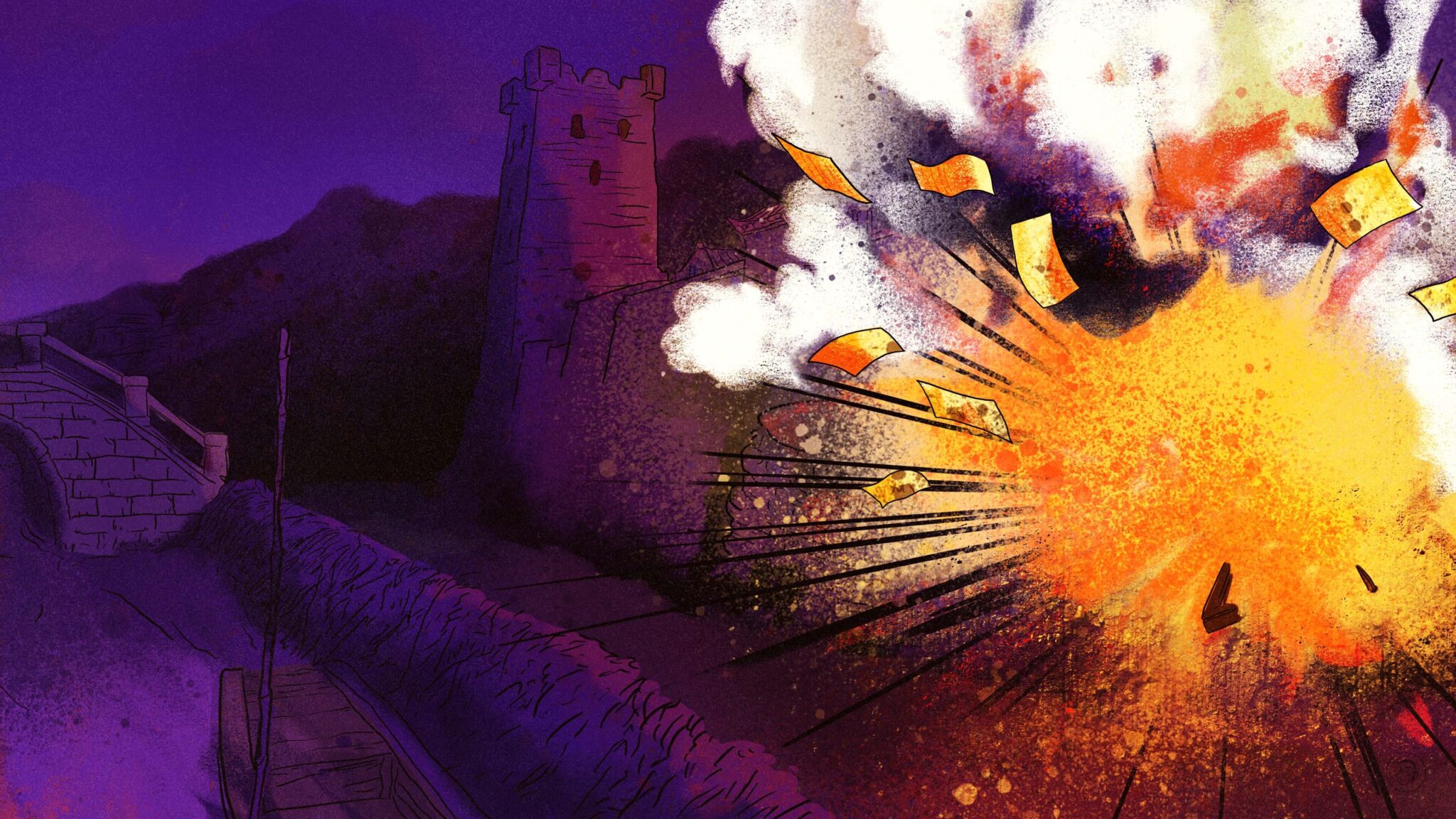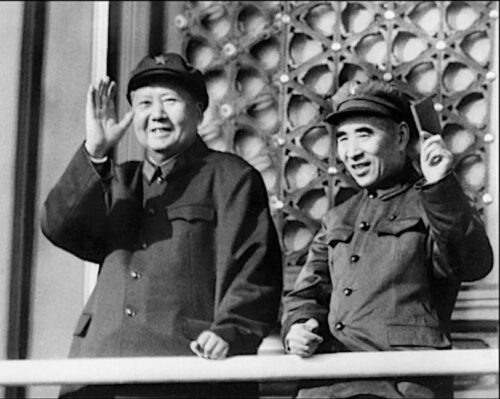This Week in China’s History: October 10, 1911
The dynasty was struggling for survival and rebellion was in the air. In the city of Wuchang — one of the three cities that make up the middle Yangtze metropolis of Wuhan — members of two dissident groups were working to bring down the Manchu monarchy that had ruled China since the 1640s. These were activists with intellectual objections to Qing rule — the two organizations were called the Progressive Association (共进会 gòng jìn huì) and the Literature Society (文学社 wénxué shè) — but their methods had left academic debate behind.
Revolts against the Qing had taken place sporadically for years — most recently, the Yellow Flower Mound uprising in April. None had yet succeeded. At a meeting in September, the revolutionaries planned their next revolt to take advantage of the Mid-Autumn Festival, on October 6, but preparations lagged and forced postponement to later in that month. The plotters continued building bombs and other munitions, sheltered by the semi-colonialism of the city’s Russian concession.
Building bombs, though, is dangerous work, especially in secrecy. On the night of October 9, one of the explosives went off accidentally. Concession police, who were on alert amid rumors of sedition, responded quickly to the blast and the fire that followed. The scene they came upon is a little too on-the-nose; scriptwriters would be criticized for creating a predictable cliché: Amid the bomb’s damage were the blueprints of insurrection — membership lists, propaganda literature, planning documents.
The concession police were, technically, independent of Qing rule, but they had little interest in social or political unrest. They quickly turned over the materials they collected to Qing authorities, which, just as quickly, moved against the usual suspects. Raiding known or suspected revolutionary hangouts, they took several dozen people into custody, executing three in the morning of October 10.
Besides intellectual and political activists, the other thread of revolution in China at the time was in the military. Reforming the military had been a priority of the Qing for some time, and the reforms implemented in 1905 had lasting, and unintended, impact. As historian Ed McCord describes it in his book The Power of the Gun, an important object of these reforms was “the creation of a professional officer corps educated in Western military science and technology. Military schools were established to train these officers, eventually forming a nationwide system of military education.” The new system included an emphasis on literacy not only among officers, but among the rank-and-file recruits. For perhaps the first time in China’s history, a military career was encouraged for the “better-educated scions of elite families.”
The aim of these reforms was to strengthen the nation, of course, but their effect left the dynasty doubly vulnerable. Military schools in China and also in Japan were part of the same nationalist milieu that encouraged nationalism among people like Lǔ Xùn 鲁迅 and Qiū Jǐn 秋瑾, including, to the dynasty’s regret, a sense that China was stultifying under Manchu rule. European and Japanese powers carved colonies and concessions out of Chinese territory, underlining Qing weakness. The Qing had been ineffective against Japan in 1894, then against a coalition of foreign powers in 1900, and had been incapable of even protecting its territory while Russia and Japan went to war over Manchuria in 1904–05. For soldiers in the New Army, the very goal for which they had been recruited seemed to demand a change in regime. By 1911, the New Army was well known as a potent revolutionary form. The membership lists and other materials found on October 9 would have confirmed this for Qing officials as they moved in to arrest insurrectionists.
The Qing sweep was “intended to forestall an uprising [but] had the opposite effect, raising fears…of mass arrests and executions. While most of the top revolutionary leadership fled, the network of revolutionary representatives in the New Army remained intact. These men quickly decided the only hope for themselves was an immediate uprising.”
Responding to attempts to identify and arrest rebels, troops mutinied. The ranks of the army divided internally: Supporters of the rebellion tied white cloths around the barrels of their guns to identify themselves. By the evening of October 10, thousands of New Army soldiers were in revolt, seizing military installations, government officers, and strategic positions. The governor-general and most commanding officers fled the city or went into hiding. By the next morning, Wuchang — the capital of Hubei Province — was in rebel hands. Within just a few days, all the Wuhan metropolis was in rebel hands. The Xinhai — or 1911 — Revolution was underway; the Qing dynasty had only a few months left.
The man most associated with the 1911 Revolution wasn’t part of the Wuchang uprising, let alone led it. Sun Yat-sen (孙中山 Sūn Zhōngshān) had been building the anti-Qing movement for decades, and after repeated false starts and missteps on his path, had gone abroad to raise money and build political support. In October 1911, he was in Denver, Colorado, where one of the oldest Chinese communities in the United States had for decades been confronting racial and ethnic discrimination and violence.
Sun learned of the uprising from the newspaper, while he sat in the restaurant of the Brown Palace Hotel in Denver. He made plans immediately to return to China, though not directly: He stopped first in the capitals of the European powers that had for so long influenced Chinese politics, looking to ensure their neutrality in the revolution. Assurances in hand, he made his way back to China, appearing publicly in Guangzhou on Christmas Day, 1911. A week later, he became provisional president of the Republic of China. The last Qing emperor formally abdicated in March.
The events of 1911 were a defining feature of China’s history, though the next few decades would show that the revolution’s success — long and short term — was hard to evaluate. Even though its legacy was complex, “1911” is a watershed in China’s history, often used to demarcate syllabuses and books. Even while it has now become almost cliché to observe that continuity across perceived breaks is as great, and often more meaningful, than change, the shorthand of dates like 1644, 1911, 1949, and others is hard to resist.
Had any of those earlier uprisings against the Qing achieved their goals — or if the Wuchang Uprising had failed — 1911 would be just another year. We might be talking about the 1910 Revolution, the 1907 Revolution, the 1903 Revolution, or some other that never came to be. But the events in Wuchang catalyzed an entire series of events that led to fundamental change in China’s political system.
If there is another lesson in the Wuchang Uprising, it is in the fundamental unpredictability of events: Sun Yat-sen, and others, had worked for decades to bring about revolution, without success. Many had given up on the idea altogether, while others had long-term plans for change. In the end, it was an unexpected and unintended explosion — perhaps because it was unintended and unexpected — that brought down a dynasty.
This Week in China’s History is a weekly column.







